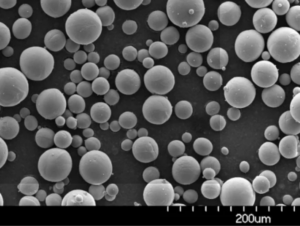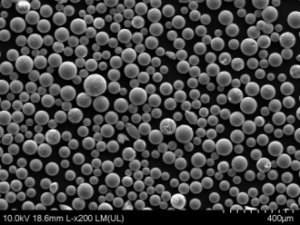の世界へようこそ EB 3Dプリンティングシステム!この分野に飛び込むのであれば、EB 3Dプリンティングの特徴、他の技術との比較、プロジェクトに最適な特定の材料について理解しようとしていることでしょう。その基礎から金属粉末の細かなディテールまで、この魅力的なテクノロジーを深く掘り下げてみましょう。
EB 3Dプリンティングシステムの概要
電子ビーム(EB)3Dプリンティングは、電子ビーム溶解(Electron Beam Melting:EBM)とも呼ばれ、高エネルギーの電子ビームを使用して金属粉末を層ごとに溶融・融合させ、高精度で優れた材料特性を持つ複雑な形状を作成する高度な積層造形プロセスです。従来の方法とは異なり、EB 3Dプリンティングでは、他の方法では製造が不可能であったり、非常に高価であったりする複雑なデザインを作成することができます。
主な詳細
- 技術だ: 付加製造
- プロセス 電子ビーム溶融
- 材料: 主に金属粉
- アプリケーション 航空宇宙、医療用インプラント、自動車、工具など
- メリット 高精度、複雑な形状、優れた材料特性
- 制限: イニシャルコストが高い、材料の選択肢が限られる、真空環境が必要
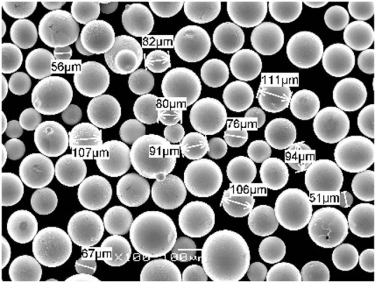
EB 3Dプリンティング用金属粉末の種類と特徴
EB 3Dプリンティングを成功させるには、適切な金属粉末を選択することが重要です。以下に、特定の金属粉末モデル、その組成、および主な特性の詳細な表を示します。
| 金属粉モデル | 構成 | プロパティ | 特徴 |
|---|---|---|---|
| Ti-6Al-4V | Ti-6Al-4V | 高強度、軽量 | 航空宇宙や医療用インプラントに広く使用されている |
| Inconel 718 | ニッケル-クロム-鉄 | 耐高温性 | タービンブレードや高応力部品に最適 |
| CoCrMo | コバルト-クロム-モリブデン | 優れた耐摩耗性 | 歯科用および整形外科用インプラントに最適 |
| 316Lステンレス鋼 | 鉄-クロム-ニッケル-モリブデン | 耐食性 | 海洋および医療用途に使用 |
| AlSi10Mg | Al-Si-Mg系 | 軽量、優れた熱特性 | 自動車および航空宇宙産業で人気 |
| マルエージング鋼 (1.2709) | 鉄ニッケル-モリブデン-コバルト | 高強度、良好な硬度 | 工具および高性能部品に使用 |
| 銅(Cu) | 純銅 | 優れた熱伝導性と電気伝導性 | エレクトロニクスと熱交換器への応用 |
| ニオブ | 純ニオブ | 高融点、優れた延性 | 超伝導体や航空宇宙部品に使用される |
| タンタル (Ta) | 純タンタル | 耐食性、高融点 | 化学処理装置に最適 |
| Hastelloy X | ニッケル-クロム-鉄-モリブデン | 耐酸化性、高強度 | ガスタービンエンジンや工業炉に最適 |
応用例 EB 3Dプリンティングシステム
EB 3Dプリンティングのユニークな機能は、さまざまな高性能アプリケーションに適しています。この技術の主な用途を見てみよう。
| 申し込み | 産業 | ユースケース |
|---|---|---|
| 航空宇宙部品 | 航空宇宙 | タービンブレード、構造部品 |
| 医療用インプラント | メディカル | 股関節および膝関節インプラント、歯科補綴物 |
| 自動車部品 | 自動車 | エンジン部品、軽量構造 |
| 金型 | 製造業 | 射出成形金型、ダイカスト金型 |
| 熱交換器 | エレクトロニクス | 効率的な冷却ソリューション |
| 超伝導材料 | エネルギー | 超電導マグネットとコンポーネント |
| 化学処理装置 | インダストリアル | 耐食コンポーネント |
仕様、サイズ、等級、規格
金属粉末の仕様、サイズ、グレード、規格を理解することは、EB 3Dプリンティングにおける互換性と性能を確保するために不可欠です。
| 金属粉 | 粒子径範囲 | グレード | 規格 |
|---|---|---|---|
| Ti-6Al-4V | 15-45 µm | グレード5 | ASTM F2924 |
| Inconel 718 | 15-53 µm | AMS 5662 | ASTM B637 |
| CoCrMo | 10-45 µm | ASTM F75 | ASTM F1537 |
| 316Lステンレス鋼 | 15-45 µm | 316L | ASTM A276 |
| AlSi10Mg | 20-63 µm | DIN 3.2381 | ISO 3522 |
| マルエージング鋼 (1.2709) | 15-45 µm | 1.2709 | AMS 6520 |
| 銅(Cu) | 10-45 µm | 銅-ETP | ASTM B170 |
| ニオブ | 20-60 µm | R04200 | ASTM B392 |
| タンタル (Ta) | 15-45 µm | R05200 | ASTM B365 |
| Hastelloy X | 15-53 µm | UNS N06002 | ASTM B572 |
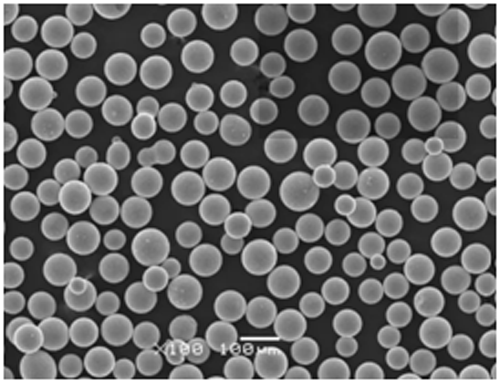
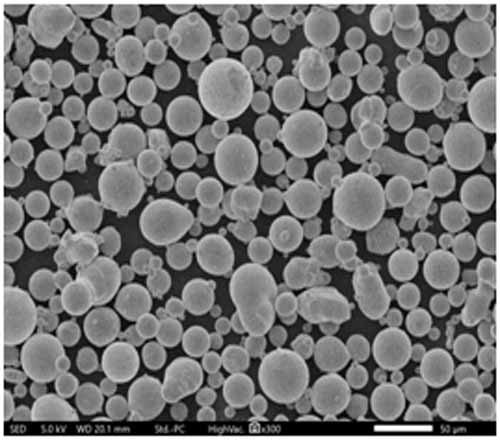
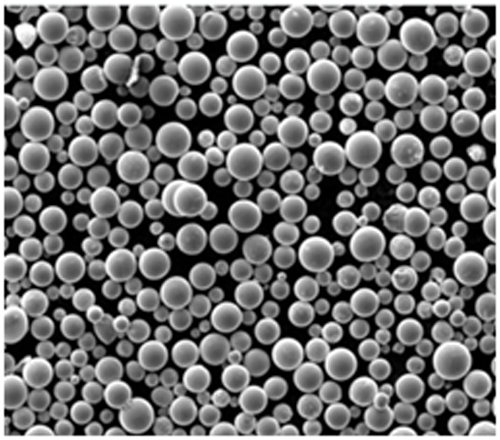
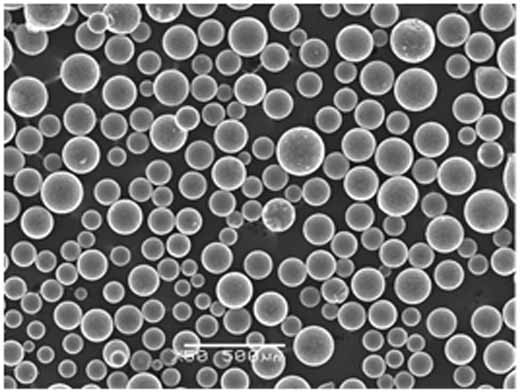
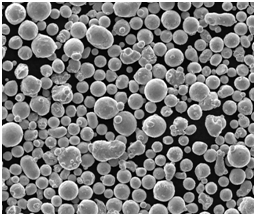
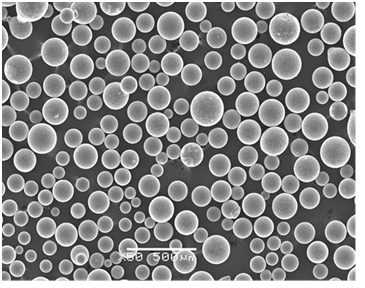
サプライヤーと価格詳細
適切なサプライヤーを見つけることは、EB 3Dプリント材料の品質と一貫性を維持するために非常に重要です。ここでは、評判の良いサプライヤーを価格詳細とともにリストアップします。
| サプライヤー | 金属粉 | 価格(kgあたり) | ウェブサイト |
|---|---|---|---|
| アドバンスド・パウダー | Ti-6Al-4V、インコネル718 | $300 – $500 | アドバンスドパウダースドットコム |
| サンドビック・マテリアル | 316Lステンレス鋼、AlSi10Mg | $200 – $400 | ホーム |
| カーペンター・テクノロジー | CoCrMo, マルエージング鋼 | $350 – $600 | カーテックドットコム |
| GKNアディティブ | 銅、ニオブ | $150 – $350 | gknadditive.com |
| LPWテクノロジー | タンタル、ハステロイ X | $400 – $700 | lpwtechnology.com |
EB 3Dプリンティングの長所と短所を比較する
EB 3Dプリンティングの利点と限界を、他の積層造形技術と比較検討することが重要です。以下に詳細な比較を示します。
| アスペクト | EB3Dプリンティング | 他の方法との比較 |
|---|---|---|
| 精密 | 高い | SLMに似ているが、FDMより優れている |
| 材料特性 | スーペリア | ほとんどのAM技術より優れている |
| スピード | 中程度 | SLSより速く、DMLSより遅い |
| 初期費用 | 高い | SLMやFDMより高い |
| 運営コスト | 中程度 | SLMと同様、DMLSより低い |
| デザインの複雑さ | 非常に高い | FDMより優れ、SLMに匹敵する |
| 素材の選択 | 限定 | SLMやDMLSよりも制約が多い |
| 後処理 | 最小限 | SLS以下、DMLSに近い |
| 真空要件 | はい | EBに特有で、SLM/FDMでは不要 |
EB 3Dプリンティングシステムの構成
EB 3Dプリンティングシステムの構成にはいくつかの主要コンポーネントがあり、それぞれがプロセスにおいて重要な役割を果たしている。
- 電子ビーム銃: 金属粉末を溶融するための電子ビームを発生させる。
- 真空チャンバー: 汚染物質のない管理された環境を維持する。
- パウダー・ディスペンサー 金属粉を均一に分布させる。
- プラットフォームを構築する: 印刷される部分をサポートし、レイヤーが追加されるにつれて移動する。
- 制御システム: ビーム制御からパウダー散布まで、印刷プロセス全体を管理。
EB 3Dプリンティングシステムの特徴
EB 3Dプリンティングのユニークな特性を理解することは、その可能性を最大限に活用するために不可欠である。
- 高いエネルギー密度: 電子ビームは高融点金属を正確に溶かすことができる。
- 真空環境: 酸化を防ぎ、材料の完全性を確保するために不可欠。
- レイヤーごとの融合: 細かいディテールを持つ複雑な形状の作成が可能。
- 最小限の熱応力: 印刷部品の反りや残留応力を低減します。
EB 3Dプリンティングシステムの利点
なぜEB 3Dプリントを検討する必要があるのでしょうか?説得力のある理由がいくつかあります:
- 優れた素材特性: 優れた機械的特性と材料の均質性を実現。
- 複雑な幾何学: 複雑なデザインや内部構造も可能。
- 廃棄物の削減: 必要な材料だけを使用し、無駄を最小限に抑える。
- 後処理が少ない: 通常、他の方法に比べて仕上げ作業が少なくて済む。
の限界 EB 3Dプリンティングシステム
どんな技術にも欠点はある。以下は、考慮すべきいくつかの制限事項である:
- 高いイニシャルコスト: 中小企業にとって、設備やセットアップのコストは法外なものになりかねない。
- 材料の制限: 他のAM法に比べて材料の選択肢が少ない。
- 真空の条件: 真空環境が必要なため、セットアップが複雑になることがある。
- スピードだ: 他の3Dプリント方法に比べ、特に大きなパーツの場合、速度が遅い。
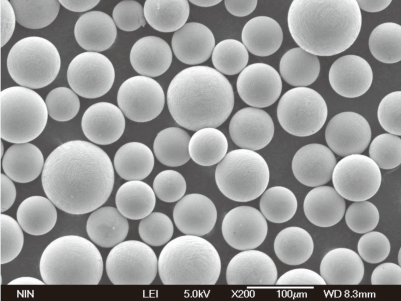
よくある質問
| 質問 | 回答 |
|---|---|
| EB 3Dプリンティングとは? | 電子ビームを使用して金属粉末を層ごとに溶融する高エネルギー付加製造プロセス。 |
| EB 3Dプリンティングはどのような産業で使用されていますか? | 主に航空宇宙、医療、自動車、製造業。 |
| どんな素材が使えるのか? | 主にTi-6Al-4V、インコネル718、316Lステンレス鋼などの金属粉末。 |
| SLMとの比較は? | 優れた材料特性と精度を提供するが、材料の選択肢が少ない。 |
| 主な利点は何ですか? | 高精度、優れた材料特性、複雑な形状の作成能力。 |
| 主な制限は? | イニシャルコストが高いこと、材料の選択肢が限られていること、真空環境が必要なこと。 |
| 後処理は必要ですか? | SLSやDMLSのような他の方法と比較すると、一般的に最小限のものである。 |
| 一般的な用途は? | タービンブレード、医療用インプラント、エンジン部品、工具。 |
| 電子ビームはどのように発生するのですか? | 真空チャンバー内で電子ビーム銃を使用。 |
| 金属粉末の一般的なコストは? | 価格は素材によって異なるが、1kgあたり150ドルから700ドル。 |
結論
EB 3Dプリンティングシステムは、高品質で複雑な金属パーツを精密かつ優れた材料特性で製造できるため、積層造形において際立っています。EB3Dプリンティングシステムには、高いコストと一部の材料制限が伴いますが、廃棄物の削減、最小限の後処理、優れた機械的特性といった利点があるため、性能と品質が最優先される業界にとって魅力的な選択肢となります。航空宇宙、医療、その他のハイテク分野のいずれであっても、EB 3Dプリンティングのニュアンスを理解することは、製造プロセスについて十分な情報に基づいた決定を下すのに役立ちます。
